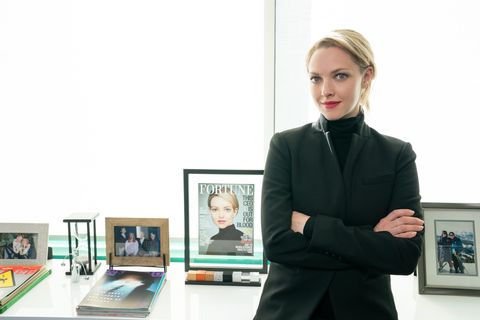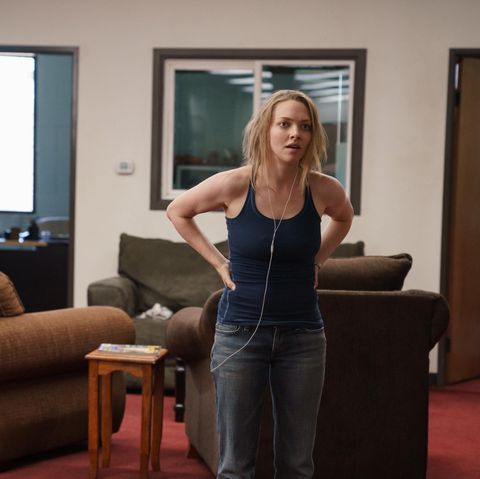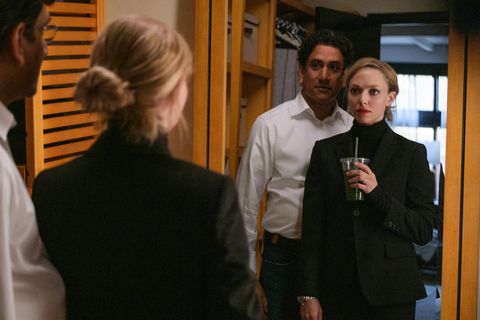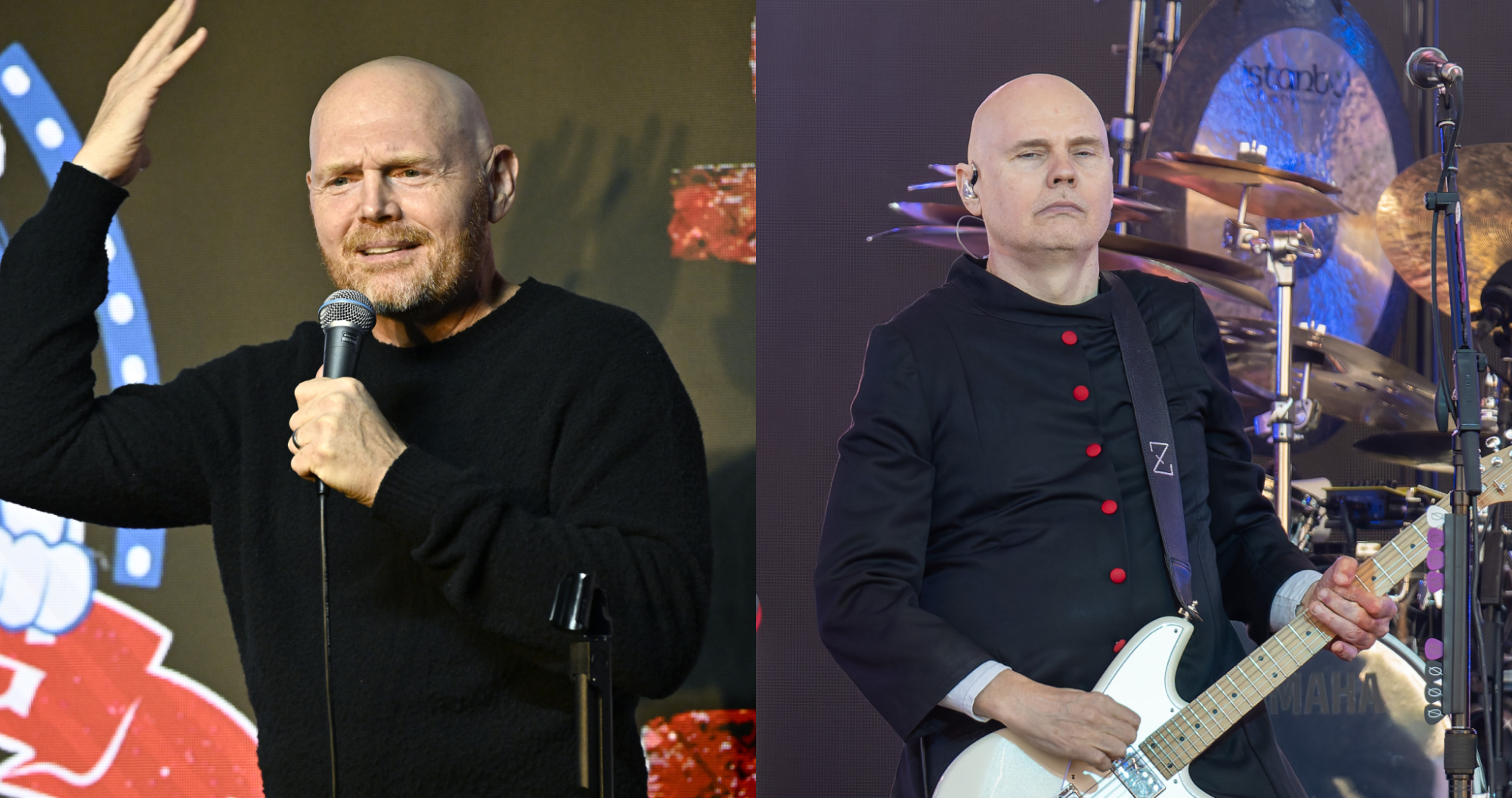How Amanda Seyfried Mastered the Elizabeth Holmes Voice
From the moment Amanda Seyfried first appears in The Dropout as teenage Elizabeth Holmes, she is already using a version of “the voice.” She speaks in a lower tone, pursing her lips and tensing her cheeks to tighten up her vowels, adding in awkward pauses here and there. But there’s a scene in the third episode, where she gives herself a pep talk in the bathroom after a tense argument with her boyfriend and business partner Ramesh “Sunny” Balwani, that’s particularly startling. Shaken and disheveled with green juice staining her white shirt, grown-up Elizabeth, now the CEO of biotech startup Theranos, recites a business pitch in the mirror to hype herself up. Her voice grows deeper and deeper each time she repeats it.
“Here at Theranos, we are developing new technology,” she says, sinking to lower depths. “This is…an inspiring…step…forward.”
It’s terrifying. It’s amazing. Whatever it is, it’s a freakishly accurate impression of Holmes’s gruff baritone. Seyfried has lent her angelic voice to high notes in Mamma Mia! and even higher ones in Les Misérables; she also spoke breathily in Mean Girls. So how did she prepare for The Dropout?
The training included voice lessons, which she takes regularly. Now she only does them twice a week, but she still keeps up with them on Zoom.
“I worked with my voice coach to make it a safe space for me to explore the depth,” the actress tells ELLE.com. “But I knew I was never going to get that low because I sit naturally a little above average on the scale of frequency. And so I was just going to do what’s deep for me and hope that the audience is already with me, because that’s episode three, when she really starts trying it on. And yes, there are different levels depending on what she’s doing, and who she’s speaking to.”
Seyfried approached Holmes’s voice like an accent. “But the thing about the voice is that it’s actually more, for me, an accent. It’s the way her mouth moves—it moves differently than mine,” she explains before seamlessly switching into her Holmes voice to say: “We speak differently.” Then she’s back to speaking as Amanda: “Like, her mouth is shaped differently.”
Before filming began, Seyfried would send videos to the director, Michael Showalter, of her practicing her accent work at home at her farm in the Catskills. She’d be “throwing hay out to the horses, as if I’m doing a TED Talk about selling hay.” She rehearsed endlessly “until it became muscle memory.”
Seyfried adds, “And then, when I got the accent, when the accent started to feel comfortable, we would work on the depth a little bit, but the depth would be in the moment. It wasn’t like I trained my voice to go lower. I just know how low I can go. And with projection, with the accent, and with deepening it and breathing a certain way, it all coincides on a good day.”
People working on The Dropout weren’t too shocked by Seyfried’s Elizabeth voice, she says, because she was always speaking with it, and their filming schedule was gradual. What did shock them, though, was her wardrobe transformation in episode 3 as she ditched her frumpy button-downs and ill-fitting trousers for a sleeker all-black outfit. “The thing I remember about being on set is the reaction when I walked out for the first time with the Elizabeth 2.0 look, which is the turtleneck, the red lip, and the hair pulled back. That was the thing that turned heads.”
The change was a thrill for Seyfried, too. “It felt incredible, because you need those layers. If you’re playing somebody who’s real, the further away you get from yourself— the more indulgent—the farther you fall into the character.”
The show explores how Holmes’s deep voice and obsession with black turtlenecks are more than just quirks; they’re proof of how she manipulated her image and her presence to be seen (and respected) as a young CEO, especially when most of her peers and advisors were men.
“She needed to be taken seriously,” Seyfried says. “And everybody knows that in the world of men, they’re naturally commanding in a lot of ways, which is why we take on these deeper voices or more projection in order to be heard, to be seen, to be understood, to be coveted. You learn that there are certain things that you can do to gain speed.”
She adds: “And she was also this petite woman who was very smart and very charismatic and knew her way around these guys in this world because she studied. She studied Steve Jobs for her whole adolescence…she was studying the way he spoke, the rhythm. She sounds a lot like public speakers in her rhythm; she sounds a lot like Obama at times. That’s not a coincidence.”
Holmes’s black turtleneck, blazer, pants, and messy bun ensemble became a uniform—something she could put on easily and look serious and put-together, without having to worry about what to wear every day. “And that was all to project this commanding presence, to project this power,” Seyfried says. “Which I get—I totally get all of it.” Holmes, a #GirlBoss icon of the early 2010s, would go on to wield that power to scam Silicon Valley, the healthcare industry, and everyday citizens with Theranos’s failed blood-testing technology. (Early this year, she was found guilty on four charges in her criminal fraud trial.)
Everyday professional women, though, can also understand the pressures of looking a certain way to be taken seriously at work. Seyfried says Dropout showrunner Liz Meriwether has felt it too. “She has a lot of stories about that and trying to feel like she fits in…and command the attention of a lot of people [and] be the boss.”
This image manipulation wasn’t all Holmes’s idea. The show posits that Sunny also had a hand in molding how the young entrepreneur presented herself. Seyfried’s co-star Naveen Andrews, who plays Balwani, tells ELLE.com that they portrayed Elizabeth and Sunny’s relationship as “fundamentally imbalanced— it opens the door to all sorts of toxic behaviors that one party might practice on the other. And it goes both ways, it seems.”
As for the show, Seyfried is excited, but bracing herself for how it—and perhaps her performance—will be received. Though, if the tweets rolling in are any indication, she doesn’t have much to worry about. “I’m on pins and needles,” she says. “Are people going to watch it? I’ve never been a part of something this…” she takes a brief pause. “I’ve never been the center of something so stressful. And wonderful.”
The Dropout is now streaming on Hulu.
This content is created and maintained by a third party, and imported onto this page to help users provide their email addresses. You may be able to find more information about this and similar content at piano.io










